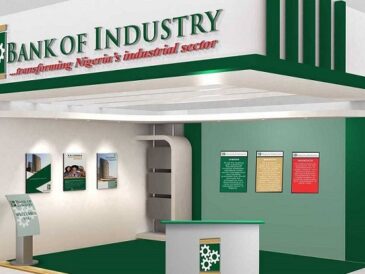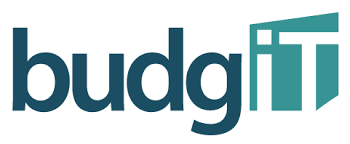Abidjan, Aug. 15, 2025 -The African Development Fund (ADF) hopes to seek replenishment through capital markets for the first time in its 17th Replenishment cycle, aiming to raise US$5billion patient capital every three years to support development of the continent’s low-income countries.
However, the ADF charter prohibits capital market borrowing. To amend the charter, 75 percent of the Fund’s shareholders have to approve of it.
The African Development Fund is the African Development Bank (AfDB) Group’s concessional arm. It seeks to provide an alternative to the Bretton Woods institutions due to their imposition of stringent conditionalities on poor African countries, which are sometimes detrimental to their growth.
Abidjan-headquartered AfDB is the continent’s biggest development bank. Established in 1972, the ADF became operational in 1974 and has since relied solely on donor grants, concessional loans and reflows to fund developments across the continent. It has provided US$45billion in concessional credit to 37 low-income African countries in 50 years.
The African Development Fund raised a whopping US$8.9billion for the 2023-2025 financing cycle. This includes US$8.5billion in core funding and US$429million for its climate window, representing the largest in its 50-year history.
The fund has set an ambitious target of raising US$25billion for the 17th Replenishment cycle, for the period 2026 and 2028.
It also faces a serious challenge as several funds globally are seeking replenishment at the same time, threatening ADF’s sources.
Speaking at the African Transformation briefing on the African Development Fund Replenishment, Division Manager for Resource Mobilisation, African Development Bank, Miss Valerie Dabady said it is high time the fund went into capital markets to raise patient capital to complement its “built-in equity”.
“2025 is a defining year,” she said, indicating that the amendment process has\xa0 been initiated and diplomatic efforts are underway to secure requisite shareholder approval before the December deadline. She revealed that, “we are at 66 percent now”.
Securing the remaining\xa0 9 percent before year-end however remains Africa’s most consequential barrier to accessing global capitals market through the fund.
She maintains that this amendment, if successful, will empower ADF to tap into larger pools of capital to fund its dual mandate of building critical “hard infrastructure” including roads, ports and energy infrastructure and strengthening “soft infrastructure” – governance and financial management systems.
The Fund is poised for a transformative shift but races against a critical December 2025 deadline to unlock global capital markets access – a move its leaders argue is essential to bridging Africa’s wide financing gap and accelerate development across the continent’s most vulnerable nations.
Miss Dabady emphasised the need for unfettered market access.
She declared that: “We have an ambition to raise up to US$5billion every three years on the capital markets, diversifying beyond traditional donor grants.
This isn’t just about more money; it’s a sea change in how we finance Africa’s future, putting us on par with our global peers,” – citing Zambia’s Success as Proof of Concept.
The Principal Economist at Zambia’s Ministry of Finance, Mr. Joseph Chanda, provided compelling evidence of ADF’s impact and vital role for nations in distress.
“Since Zambia’s debt distress classification in 2017, ADF has been our lifeline,” he said.
“Locked out of the AfDB’s market-rate window, ADF concessional financing is indispensable. ADF resources are proving impactful. We need continued support.”
He detailed impacts the fund’s intervention had accrued for the Zambian economy. These include a US$13.5million ADF grant for improving access to water and sanitation in communities at Lusaka and Kawe.
Mr. Chanda indicated that ADF’s climate window also supports vulnerable smallholder farmers in Zambia through irrigation projects.
The government economist pointed to ADF-funded US$68million Kazungula Bridge that connects Zambia to Botswana and the Nakala Road Corridor – a One-Stop Border Post with Malawi that cost US$17.7.
He revealed that the Lobito Corridor rail project – linking DRC, Zambia, and Angola – has received additional US$247 million from the ADF’s regional window, following Zambia’s commitment of 10 percent of its US$36 million ADF-16 allocation to the project.
According to him, this improved regional connectivity has dramatically boosted regional trade.
Zambia’s story demonstrates the ADF’s ability to deliver transformative regional infrastructure and essential services.
Miss Dabady outlined innovative financial tools such as the Private Sector Credit Enhancement Facility and Partial Credit Guarantees, which have already been deployed successfully in Benin and Rwanda.
According to her, these serve to lower risks and attract private investment, considering the sweeping nationalist posture on the global stage.
She acknowledged the “challenging global context” for development funding, with many traditional donor nations focused inward.
She however emphasized the need for strong awareness and advocacy to spread the successes of the fund and expand its donor base. “Amplify our story. Understand the financing gap.
Africa is a critical market – providing critical minerals, arable land, resources, and a dynamic youthful workforce,” she added.
Success in December could unlock billions, empowering the ADF to scale its mission significantly – connecting the continent, powering economies, and lifting its most vulnerable nations towards prosperity.
The African Development Fund (ADF) is part of the African Development Bank Group (AfDB). It contributes to poverty reduction efforts in its regional member countries by spurring sustainable economic development and social protection.




